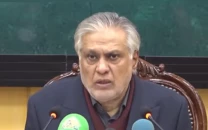India's 'more options' ICBMs
The intense bombing damaged Iran's nuclear facilities but not beyond repair, as per the IAEA

India's strategic consideration is to extend the range of its ICBMs beyond the territories of its rivals — China and Pakistan. It's a worrisome development for those who played a significant role in allowing India to extend the ranges of its ICBMs. In the future, Western capitals will fall within India's ICBM targeting range.
ICBMs are one of the potent modes of carrying weapons of mass destruction. Nuclear-tipped ICBMs can cause havoc on rivals and are instrumental in ensuring mutual vulnerabilities. This adds lethality to these weapons that rivals keep a wary eye on the development of each other's ICBMs.
India's friends kept a blind eye on its ICBMs. Is it because India has been granted the status of 'Net Security Provider' and 'Major Defence Partner' in the Indian Ocean Region by the United States? Likewise, a Cold War power also covertly assisted India in developing its ICBM programme through its space launch vehicles.
However, there are no permanent enemies, nor are there permanent friends; only interests. Therefore, there is a need to debunk the perception that India's extending ICBM ranges are only to target Pakistan and China. India's ICBMs can also pose a potent threat to its allies in the future. Once such a capability is achieved, it will not be easy to reverse it. Recently, the world has witnessed the US bombing of bunker busters on Iran's nuclear facilities.
The intense bombing damaged Iran's nuclear facilities but not beyond repair, as per the IAEA. This also lends credence to India's ICBM programme, which has extended ranges. It has taken advantage of Western capitals' blind spot on its deadly development. Once India develops ICBMs with extended ranges, Western capitals will be permanently on its target list.
The workhorse of India's ICBM arsenal is Agni-V, recently deployed by its Strategic Forces Command, representing a significant step in target acquisition beyond its rivals' territories. Agni-V was first tested in 2012 with a declared range of 5,500km. Officially, it was a long-range ballistic missile (LRBM). Chinese experts initially assessed that the Agni-V range was under-declared, and its actual range is 8,000km.
However, the Indian strategic community maintained a strategic silence on its range. ANI first broke the news in 2022, reporting that India could extend the range of Agni-V up to 7,000km by replacing the steel content with composite materials. Presently, Agni-V is now Multiple Independent Targetable Re-entry Vehicle, providing more options for utility to the Indian Strategic Force Command during conflicts. Now, after all these years, Indian media and analysts openly suggest that the Agni-V range is 8,000km.
What about Agni-VI and Surya ICBMs? Will these two ICBMs provide India with more options? Of course, these two will be utilised for more options. News about Surya first came to the public in 1999. The development was kept secret but accidentally revealed by Indian Minister of State for Defence (and former head of DRDO) Bachi Singh Rawat.
He told the media that India is developing an ICBM known as Surya that would have a range of up to 5,000km. Mr Rawat was later stripped of his position after disclosing the ICBM. He dropped a bombshell on the international community by revealing India's top-secret, under-development ICBM.
Indian rocketry received significant assistance from the Space Launch Vehicle programme, which it obtained with foreign support. Notably, India received Cryogenic engines for its SLV programme from Ukraine and Russia in the 1990s. It is believed that the same cryogenic engines are now Surya's test-bed. In the early 2000s, Russian and Western intelligence assessments indicated that India was developing an ICBM with more than 5000km range, which can be extended to 10,000km. Nevertheless, Western powers conspicuously kept mum on this, knowing that they would eventually be on India's targeting list.
Independent analysis also suggests that Agni-VI has a range of 10000-12000km. Agni-VI and Surya are under development, and to date, no test or trial of these systems by DRDO has been conducted.
The Indian decision not to test Agni-VI and Surya may be due to unseen pressure from the US. Previously, the US has least criticised India on its anti-satellite test in 2019, despite overtly criticising China and Russia's ASAT missile tests in the past. India may test Agni-VI and Surya by ignoring US pressure, as it completely ignored the US pressure when it tested its ASAT missile.
India does not deny the development of both. However, India never openly discussed it due to the possibility of pressure from London, Paris, Moscow and Washington, as they were already aware of such developments. Instead, Washington and its allies are busy alleging that other powers are developing ICBMs.
What is this "more options" strategy? Is there any rocket science required to understand more options strategy? No, India's intermediate-range and long-range ballistic missiles are enough to achieve targets within the territories of Pakistan and China. Therefore, "a more option" strategy is linked with Agni-VI and Surya to acquire targets well beyond Pakistan and China. London, Paris, Moscow and Washington may reconsider their position and think about being included in the "more options" strategy.
The Western powers have helped India develop its ICBM capability while also allowing the interchangeability of space and missile components and systems, which has contributed to India's space and ballistic missile programmes. Now, the onus lies on them to think about India's "more option" strategy.















COMMENTS
Comments are moderated and generally will be posted if they are on-topic and not abusive.
For more information, please see our Comments FAQ